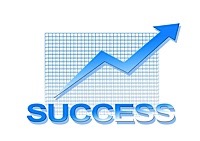
Last week I attended the National Manufacturing Competitiveness Summit, hosted by the Council on Competitiveness in Washington DC. During the Summit, the Council released a comprehensive national manufacturing strategy to create a more robust and globally competitive industrial base. In the report, the Council states “American manufacturing is either in steep decline, doing reasonably well or poised to grow.”
Depending on your perspective and the data you use, there is some truth in each view. But what does this mean for our future? How can U.S. manufacturing continue to be competitive and relevant within the context of an ever changing, technology-driven, global economy?




















